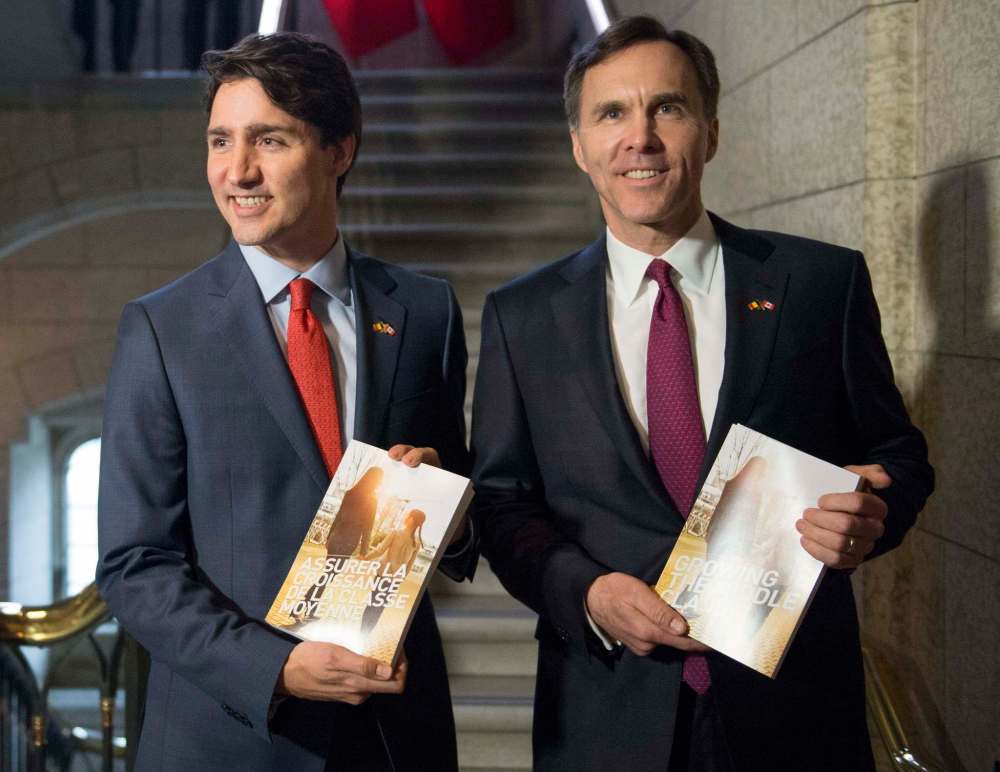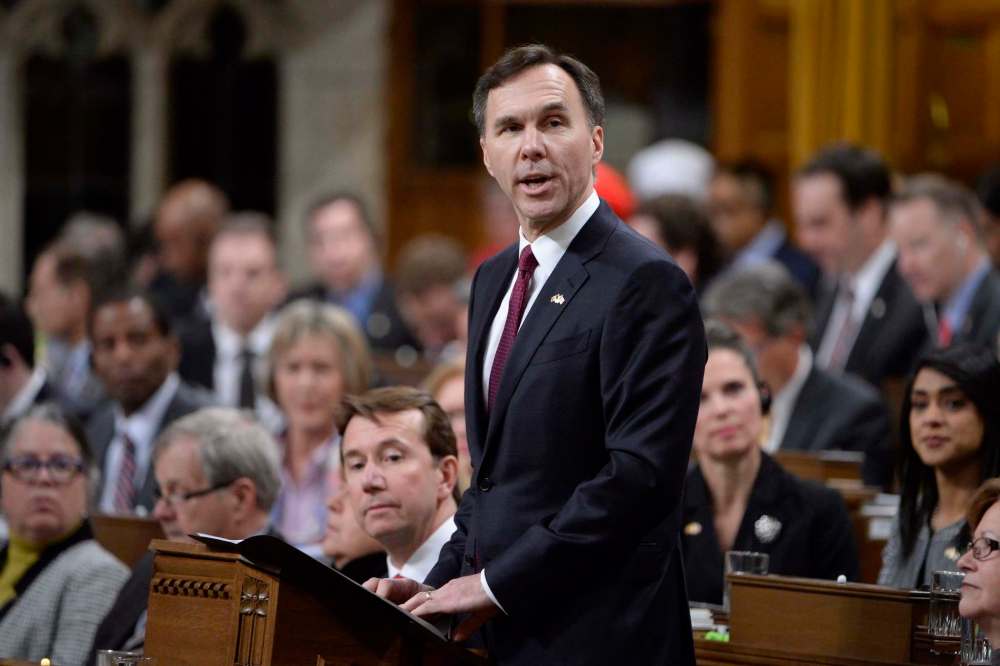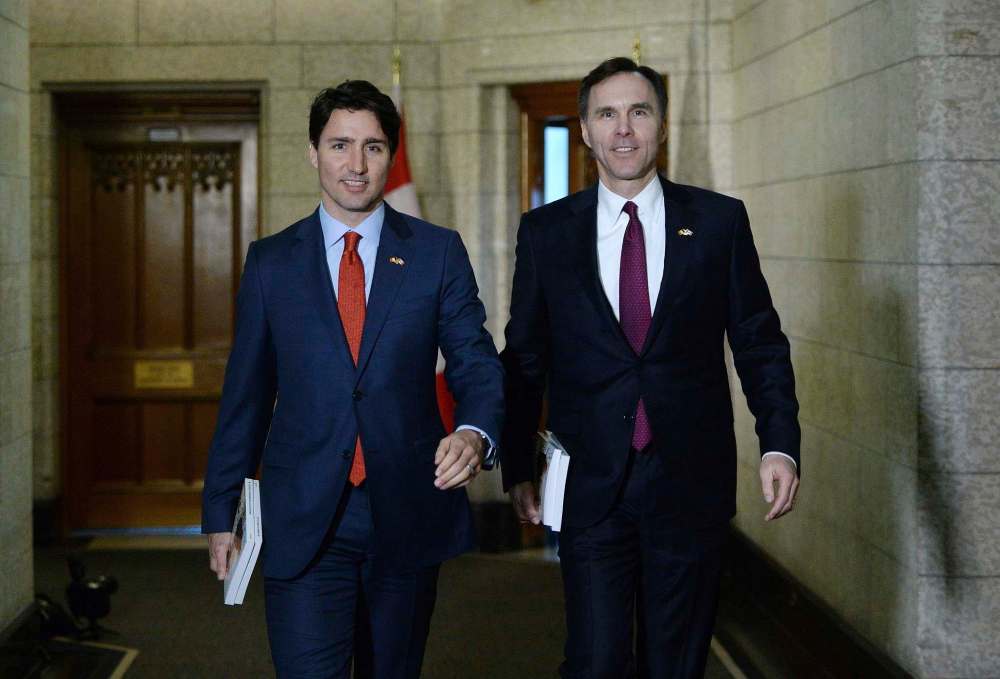Liberals’ budget showers money on infrastructure, indigenous communities
Advertisement
Read this article for free:
or
Already have an account? Log in here »
To continue reading, please subscribe:
Monthly Digital Subscription
$1 per week for 24 weeks*
- Enjoy unlimited reading on winnipegfreepress.com
- Read the E-Edition, our digital replica newspaper
- Access News Break, our award-winning app
- Play interactive puzzles
*Billed as $4.00 plus GST every four weeks. After 24 weeks, price increases to the regular rate of $19.00 plus GST every four weeks. Offer available to new and qualified returning subscribers only. Cancel any time.
Monthly Digital Subscription
$4.75/week*
- Enjoy unlimited reading on winnipegfreepress.com
- Read the E-Edition, our digital replica newspaper
- Access News Break, our award-winning app
- Play interactive puzzles
*Billed as $19 plus GST every four weeks. Cancel any time.
To continue reading, please subscribe:
Add Free Press access to your Brandon Sun subscription for only an additional
$1 for the first 4 weeks*
*Your next subscription payment will increase by $1.00 and you will be charged $16.99 plus GST for four weeks. After four weeks, your payment will increase to $23.99 plus GST every four weeks.
Read unlimited articles for free today:
or
Already have an account? Log in here »
Hey there, time traveller!
This article was published 22/03/2016 (3493 days ago), so information in it may no longer be current.
OTTAWA – Massive new spending for indigenous peoples on reserves and new infrastructure programs with a deficit nearly three times the size promised during the election highlight the first federal budget under Prime Minister Justin Trudeau.
The budget, unveiled in Ottawa Tuesday, will increase program spending more than $20 billion in 2016-17 and run a deficit of $29.4 billion, as it invests in everything from clean drinking water on reserves to public transit, student grants and families with kids.
Finance Minister Bill Morneau called the plan “reasonable and affordable” as he delivered his maiden budget speech in the House of Commons Tuesday afternoon.

“Today we begin to restore hope for the middle class. Today we begin to revitalize the economy,” Morneau said.
As expected, the budget far exceeds the $10 billion deficit Trudeau said he would run during the election campaign last fall, and he does not expect it to be balanced before the next election. In fact, the budget predicts the government will still run a $14.4 billion deficit a year after the next federal campaign. Over five years the government intends to add $113 billion to the national debt. While the debt-to-GDP ratio will initially rise, the budget does intend to live up to the government’s promise to lower that ratio by the end of its mandate despite deficit budgets.
Canada’s debt-to-GDP ratio is currently the lowest among G7 nations.
In a press conference with reporters during the budget lock-up in Ottawa, Morneau said the government is making the kind of investments it promised in families and infrastructure, which will set the country on the right path for economic growth that will get the budget back into the black.
“It will take a few years, but we will get there,” he said.
However, neither Morneau nor the budget documents predicted when that might happen.
The budget also takes a cautious approach to expected economic growth, leaving the door open for the Liberals to see a deficit lower than currently predicted if their doom-and-gloom economic scenario doesn’t become reality. While private sector economists predict an average GDP growth of 1.4 per cent in 2016 and an average price of oil at $40 a barrel, the budget assumes growth of just one per cent and oil at $25 a barrel this year.
Those assumptions reduce government revenues by $6 billion a year for the next four years.

Manitoba Conservative MP Candice Bergen said this budget is a betrayal by the Liberals of what they promised voters last fall.
“It’s a very disappointing budget. All this spending and there’s not even going to be any growth,” she said.Bergen pointed to the forecasted growth in GDP over the next several years which runs between 2.2 per cent in 2016 and 2.0 per cent in 2019.
Manitoba NDP MP Niki Ashton said the government missed an opportunity to close the inequality gap. It’s not clear if the government is going to make good on promised infrastructure projects for Manitoba, such as helping fund the East Side Road or paying for a share of Freedom Road to connect Shoal Lake 40 First Nation to the Trans Canada Highway.
Both were promised during the election by Trudeau and neither were mentioned in the budget.
The biggest investments in the budget go to indigenous people, with $8.4 billion over five years, and $11.9 billion over five years for the first of a two-phase infrastructure program. Indigenous programs will include investments in education, child and family services, water and waste-water and housing.
Infrastructure spending over the next five years will include $3.9 billion for public transit systems, $5 billion for water, waste-water and green projects and $3.4 billion for affordable housing, child care and recreational infrastructure.
The budget also makes good on the promise to introduce a new tax-free, income-tested Canada Child Benefit, which will add about $3 billion to the annual budget when fully implemented. Improvements to employment insurance will make it easier to qualify for benefits and offers longer benefits to people where the unemployment rate has grown faster than the rest of the country, including in northern Manitoba and most of Alberta.
Sprinkled throughout the budget are possible signs of good things to come for Manitoba down the road. In the second phase of the government’s infrastructure program, which will begin to roll out in two years, the government hopes to “deliver fast, efficient trade corridors that allow Canadian exporters to benefit fully from international trade.” This could be a benefit to Winnipeg’s Centreport, and the long-time Manitoba effort to be part of a mid-continental trade corridor between Churchill and Mexico.

There is also $2.5 million over the next two years for Natural Resources Canada to work with the provinces to identify the best regional electricity infrastructure projects that will cut greenhouse gases. Manitoba has long dreamed of establishing a national energy grid so it can sell its hydroelectricity east and west rather than mostly to the United States. This work will begin the process of figuring out how to best start constructing that grid, and builds on discussions at the most recent meeting between Trudeau and the country’s premiers.
Other Manitoba goodies in the budget include $82 million for public transit, new funding for the Canadian Museum for Human Rights and $248 million to build channels between Lake Manitoba and Lake St. Martin for long-term water-level control and flood protection for the communities in the area.
Manitoba’s Heavy Urban Search and Rescue team, based in Brandon, will also share $15.5 million over the next five years with three other teams in Vancouver, Calgary and Toronto. The money restores some federal funding cut by the previous government four years ago.
mia.rabson@freepress.mb.ca


History
Updated on Tuesday, March 22, 2016 4:25 PM CDT: adds images.
Updated on Tuesday, March 22, 2016 4:28 PM CDT: adds graphics
Updated on Tuesday, March 22, 2016 6:11 PM CDT: Updated.




